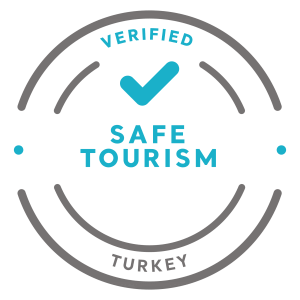What to Consider After Tooth Extraction?
Tooth extraction is a dental procedure that is performed for various reasons and is usually completed quickly. However, the post-extraction process is of great importance for a smooth and quick recovery. Following the right care and instructions reduces the risk of infection and speeds up the healing process. Here are the main points to consider after tooth extraction:
- Bleeding Control
After the extraction, keep the gauze placed by your dentist in place by biting on it for about 30-45 minutes. This will help stop the bleeding.
If bleeding continues, repeat the same procedure with a new sterile gauze pad.
Avoid continuous spitting to avoid preventing the formation of a blood clot.
- What to Pay Attention to in the First 24 Hours?
The first 24 hours after tooth extraction is a critical period:
Avoid Mouth Rinsing: Rinsing the mouth in the first day can dislodge the blood clot and delay healing.
Avoid Hot Foods and Drinks: Hot foods can increase bleeding. Prefer warm or cold foods.
Avoid Smoking and Alcohol: Smoking adversely affects blood circulation and slows healing. Alcohol can increase bleeding.
- Pain and Swelling Management
Mild pain and swelling after extraction is normal. You can use painkillers recommended by your dentist.
To prevent swelling, apply an ice pack externally for the first 24 hours. It is recommended to apply the ice for 15 minutes and then take a 15 minute break.
- Nutrition Recommendations
Eat Soft Foods: Choose soft and cold foods such as soups, yogurt, purees and ice cream.
Avoid Hard and Grainy Foods: Hard or granular foods can damage the wound site.
Chew Away from the Extraction Site: Be careful when chewing to avoid food coming into contact with the extraction site.
- Hygiene and Cleaning
Oral hygiene is important after tooth extraction, but be careful not to irritate the wound area.
Be careful not to touch the extraction site when brushing your teeth.
From the second day onwards, you can support healing by gargling with warm salt water (a teaspoon of salt in a glass of water).
- Avoid Physical Activities
Avoid heavy exercise and physical activity during the recovery period. Activities that increase blood pressure can trigger bleeding. Take care to rest for the first few days.
- Beware of Possible Complications
Contact your dentist if you experience excessive pain, bad odor or prolonged bleeding at the extraction site.
Especially within a few days after the extraction, a condition called dry socket (alveolitis) can develop. This occurs when a blood clot in the extraction cavity dislodges and can cause intense pain. In such cases, be sure to consult your doctor.
- Do not neglect check-up appointments
Your dentist may recommend a follow-up appointment to evaluate the healing after extraction. You can keep this appointment without interruption and have your healing process closely monitored.
Paying attention to oral care and your dentist’s recommendations after tooth extraction accelerates the healing process and reduces the risk of complications. By following the recommendations, you can regain a healthy oral structure in a short time.
Remember, do not neglect to consult your dentist in any suspicious situation. Your health should always be your priority!




